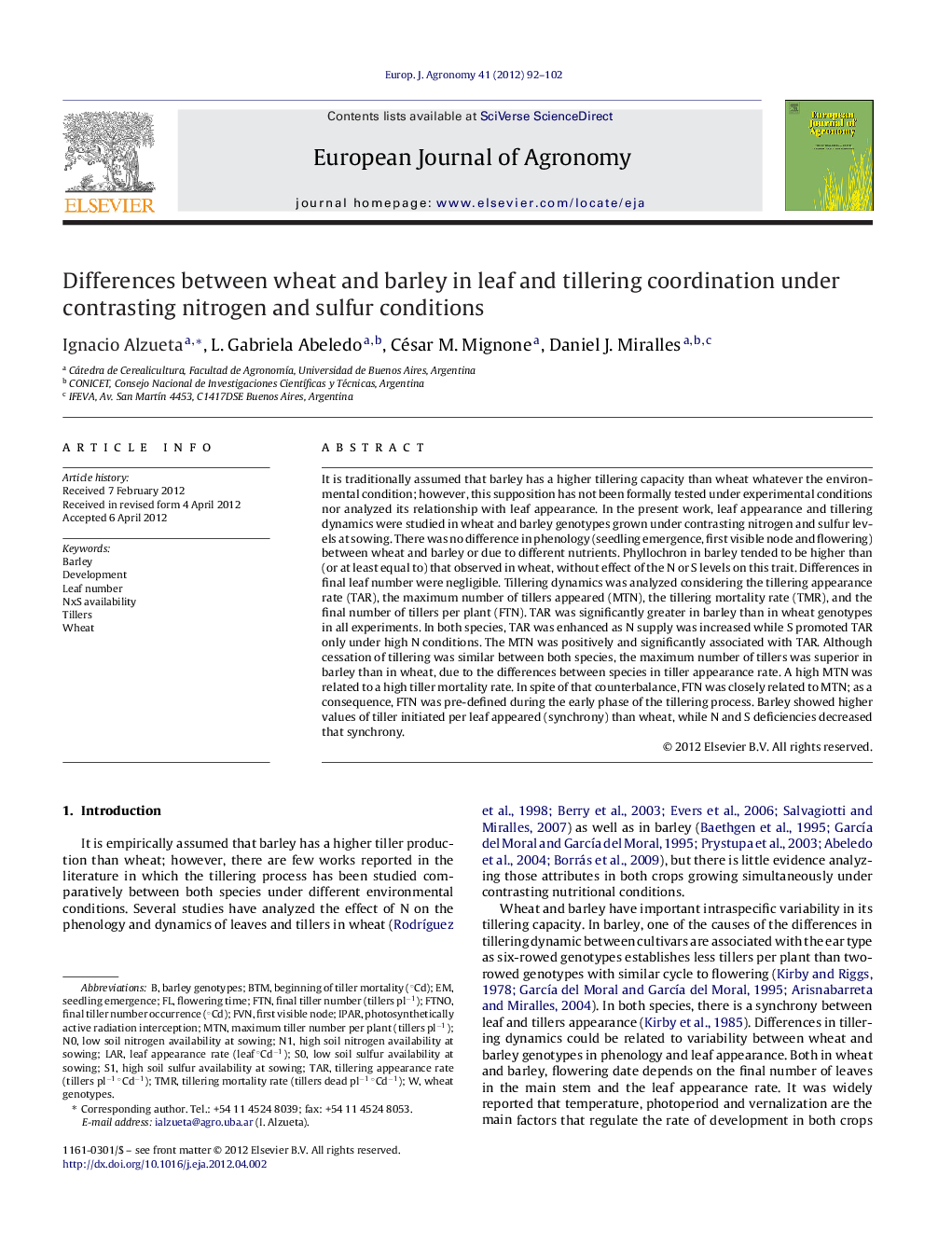| Article ID | Journal | Published Year | Pages | File Type |
|---|---|---|---|---|
| 4509110 | European Journal of Agronomy | 2012 | 11 Pages |
It is traditionally assumed that barley has a higher tillering capacity than wheat whatever the environmental condition; however, this supposition has not been formally tested under experimental conditions nor analyzed its relationship with leaf appearance. In the present work, leaf appearance and tillering dynamics were studied in wheat and barley genotypes grown under contrasting nitrogen and sulfur levels at sowing. There was no difference in phenology (seedling emergence, first visible node and flowering) between wheat and barley or due to different nutrients. Phyllochron in barley tended to be higher than (or at least equal to) that observed in wheat, without effect of the N or S levels on this trait. Differences in final leaf number were negligible. Tillering dynamics was analyzed considering the tillering appearance rate (TAR), the maximum number of tillers appeared (MTN), the tillering mortality rate (TMR), and the final number of tillers per plant (FTN). TAR was significantly greater in barley than in wheat genotypes in all experiments. In both species, TAR was enhanced as N supply was increased while S promoted TAR only under high N conditions. The MTN was positively and significantly associated with TAR. Although cessation of tillering was similar between both species, the maximum number of tillers was superior in barley than in wheat, due to the differences between species in tiller appearance rate. A high MTN was related to a high tiller mortality rate. In spite of that counterbalance, FTN was closely related to MTN; as a consequence, FTN was pre-defined during the early phase of the tillering process. Barley showed higher values of tiller initiated per leaf appeared (synchrony) than wheat, while N and S deficiencies decreased that synchrony.
► Tiller appearance rate and maximum tiller number was higher in barley than in wheat. ► Increases in the N and S levels at soil promoted those effects. ► Final tiller number was closely related to maximum tiller number. ► Final tiller number was pre-defined during the early phase of the tillering process. ► Barley showed higher values of tiller initiated per leaf appeared (synchrony) than wheat.
